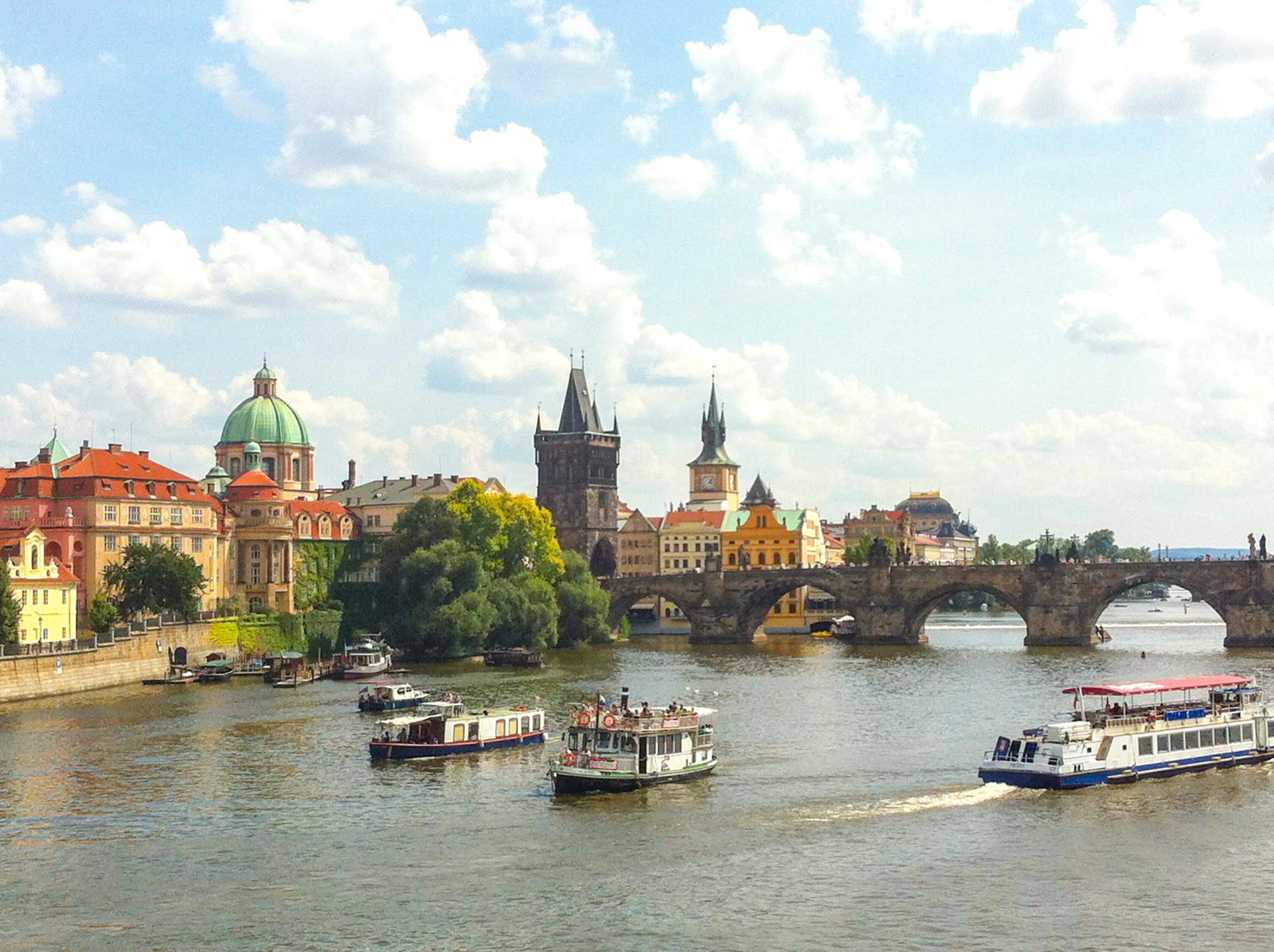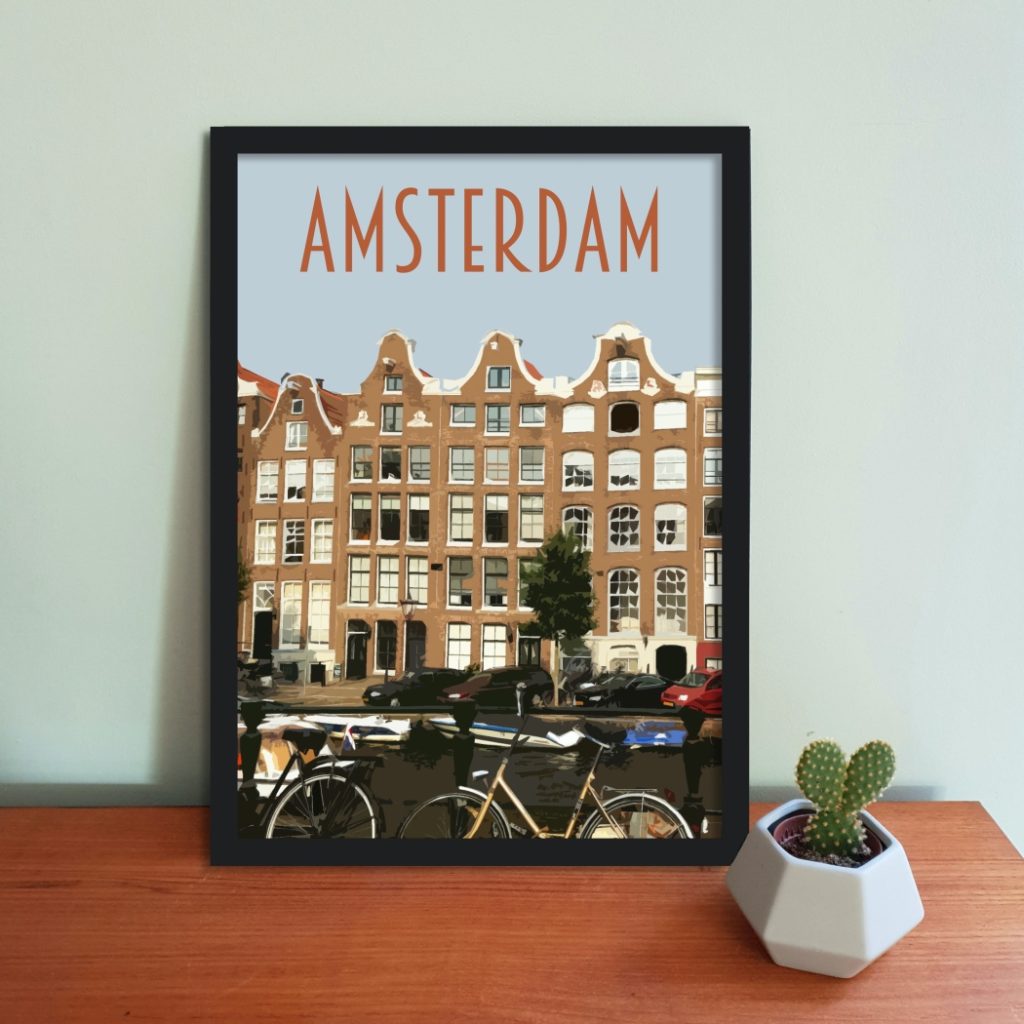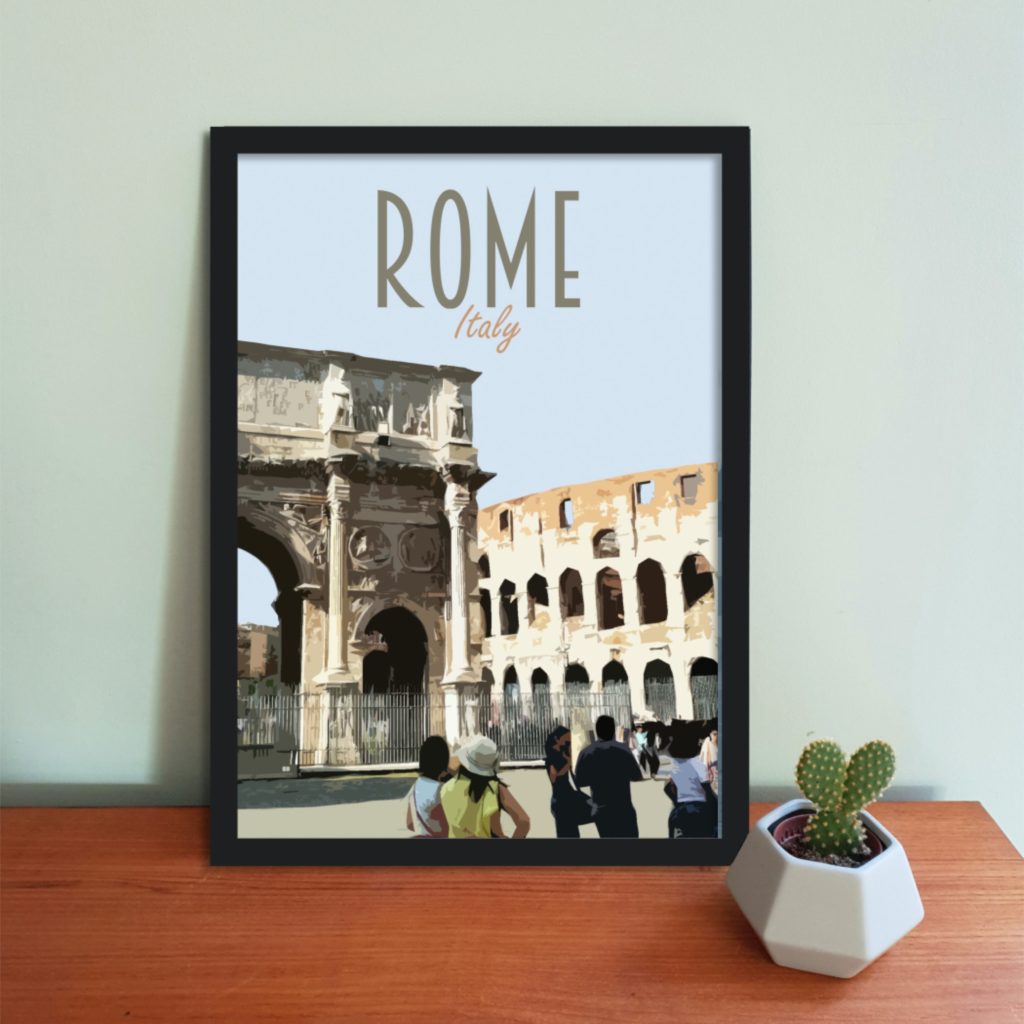Europe isn’t a huge continent but there is so much to explore. You can visit some of world’s busiest cities like London, Paris and Berlin. Connect with nature in Norway’s Fjords or the Dolomites in Italy. Discover rich history and culture at Athen’s Acropolis, the Colosseum in Rome and Anne Frank’s home in Amsterdam. Study art at the Louvre in Paris, Park Guell in Barcelona or the Sistine Chapel in Vatican City. No matter what is on your bucket list to see, you’ll like want to move around the continent but what exactly is the best way to travel in Europe?
In this article, we’ll be exploring the easiest, quickest and cheapest ways to get around Europe. We will focus on four methods of transport: planes, trains, buses and cars.
Travelling Europe by Planes

There are several budget airlines operating in Europe, so flight hopping can be a quick and inexpensive way to explore a wide area of the continent. We used this method for a multi-stop trip several years ago. We only had two weeks off work and wanted to explore a few different cities that we hadn’t visited before. After finding cheap flights to Barcelona, we checked for the cheapest flights from there and ended up in Bordeaux. The cheapest flights from there took us to Milan and we ended the trip in Nuremberg.
Pros of travelling by plane
Flying is obviously one of the quickest ways to travel. The difference to trains and cars is particularly felt over long distances. If you want to visit destinations spread widely across Europe without exploring places along the way, then flying is ideal. There is also the advantage of easily crossing the sea without the need for ferries and boats. Hence opening your trip up to the many islands of Europe.
With airlines like Ryanair, Easyjet and Wizzair offering dozens of routes across Europe for prices as low as £5 each way, flying can actually be a really cheap option if you’re able to find good deals on flights. However, just remember to factor in the cost of getting to and from the airport. Airports are usually a little way out from the city centre. Sometimes the transfer from the airport can cost more than the flight. Look out for local bus and train services for the cheapest option. Be wary of “express” train services, they’re usually tourist traps that are double the price and not necessarily much quicker.
Cons of travelling by plane
The downside of flying is the amount of time you will end up spending in airports, and getting to and from the airport. Sure, your flight might only be an hour or two, but there could be a 30 minute airport transfer either side. Plus you’ll arrive 2 hours before the flight. It all adds up so a 1 hour flight in reality could take 4-5 hours door to door. This might still be quicker than other options but don’t forget to factor in the additional time for flying when making a decision!
You may well find lots of cheap flight options but budget airlines will always make you pay more for ‘add-ons’. For example, a hold luggage or even a reasonable size hand-luggage bag. This can be avoided for shorter trips, you might be able to pack light in one large rucksack. Or if you’re travelling with someone, maybe you could share a larger case and split the cost. Otherwise, these hidden costs can quickly increase the price.
Lastly, one of the biggest cons to travelling by plane is the environmental impact. It is well known that flying is not good for the environment. If you are concerned about the impact your travels have on the environment and the climate, use a website like Eco Passenger to calculate your emissions.
When it’s best to travel by plane
Flying is likely your best option if you only have a couple of weeks to spend in Europe and you want to visit quite a few places that aren’t particularly near one another.
Similarly this can also be a good option if you only have 2 weeks and aren’t particularly fussed about where you go, but you definitely want to move around. This way you can just look out for the cheapest flights and see where it takes you.
How to plan a trip around Europe by plane
To plan a trip in Europe which mostly involves flights, I recommend using a website like Skyscanner, Google Flights or Kayak. If you don’t have you heart set on a particular city, enter your starting destination and leave the the ‘Where To’ field blank to explore your options. You can sort by cheapest or look at map view. You can continue doing this with each of your destinations until you find your way home. Plan the route first before you book any of the flights. You may find it’s not easy to get home from the final stop so you might have to alter the route.
It’s worth checking which airport you’re actually flying to each time and see if there are any other places you can explore nearby that doesn’t necessarily involve another flight. For example, the flights we booked to Milan actually flew to airport much closer to Bergamo so we visit both. Milan is also around an hour away from Lake Como so we took a day trip there too.
Travelling Europe by Train
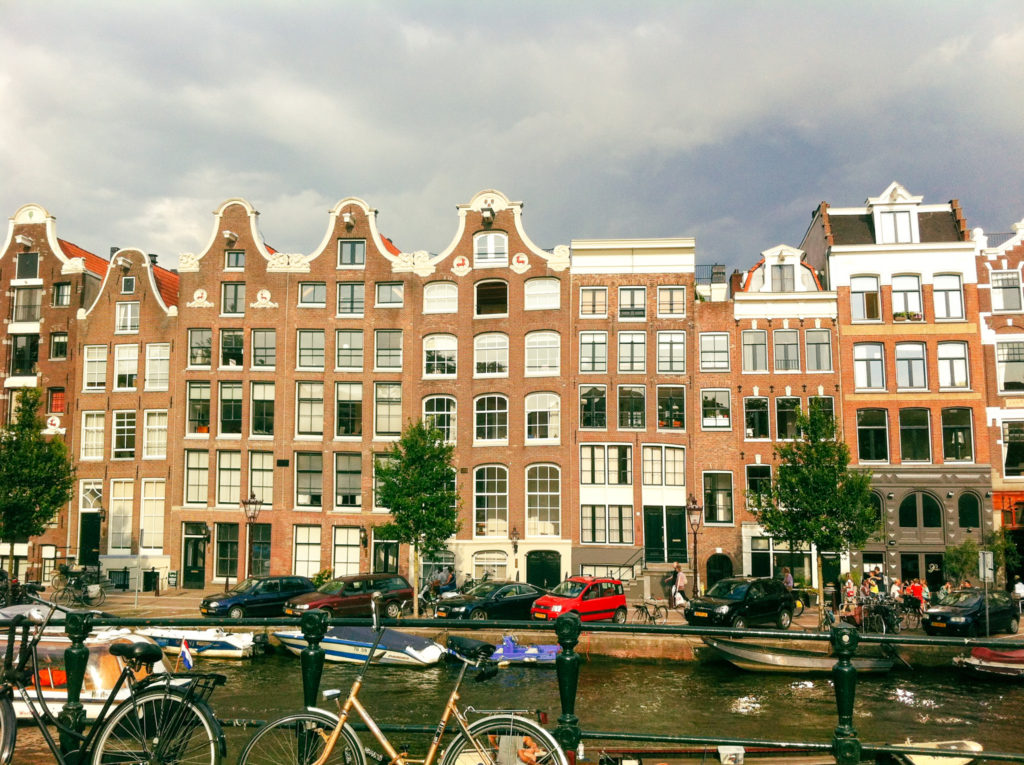
Travelling around Europe by train is made super easy thanks to the interrail and eurail tickets. These are passes that are valid for a few weeks or months at a time. These allow you to travel on almost any train around Europe!
Pros of travelling by train
European cities are very well connected by a vast rail network. This means it is super easy to get from city to city by train. Train stations are also mostly in the centre of cities. So you’ll be dropped off in the heart of your next destination.
Trains in Europe are relatively fast and comfortable, especially compared to buses. Many European countries like Italy, Spain, Germany and France also have high speed trains reaching speeds of 300km/h. The Channel Tunnel and Eurostar train means you can even access the UK via train. The route allows you to travel from London to Paris in just over 2 hours. This is only an hour longer than the equivalent flight but actually quicker if you take into account travel time to and from the airports.
The Interrail and Eurail passes also make this journey easy to book as you won’t need to book lots of separate tickets. It also adds flexibility as you can hop on almost any train whenever you like within the time fame of your ticket.
Cons of travelling by train
The main downside to travelling my train is that it isn’t exactly cheap. The most popular interrail ticket, which allows you to travel on 7 days within 1 month is currently €335 (£296 or $390 ). And this is likely much cheaper than booking your trains individually. However, there are a number of different pass options so you might find a cheaper option still works for your itinerary. Interrail also offer a generous discounts if you’re under 28 years old.
You might also need to factor in additional costs for reservations which are required on certain trains. These must be booked in advance and can cost between €5 and €36. Although usually reservations are around €10-12.
When it’s best to travel by train
Choosing to travel by rail is best for longer trips when you have a month or more to explore the continent. This allows you to make the most of the interrail passes.
You could still opt for rail travel on short breaks of just a week or two but in this case it might be best to concentrate on a smaller area so you aren’t spending full days on trains.
Train travel is also most ideal for when you want to mainly visit cities, rather than countryside, rural landscapes and national parks.
How to plan a trip around Europe by train
To plan your trip by train, I would recommend figuring out how much time you have. Next, write a list of cities you would like to visit. You will probably want to spend an average of 2-3 days in each city. So if you have 4 weeks, you could reasonably visit 8 or 10 places. On our interrail trip we visited 14 cities in 5 and a half weeks. Once you have your bucket list, plot a rough route on a map based on which places are nearest each other. Check the interrail timetable to find our how long each train journey is. You might find some journeys are longer than you thought, so you might want to consider breaking up the travel with a stopover in between. Lastly, check which pass best fits your itinerary.
Alternatively, you could start by checking the types of passes available. If the cost is going to be a constraint, pick a cheaper pass first, then build an itinerary around that. For example, you might select a pass that only allows 5 days travel. However, if you really want to cut costs you might want to consider buses instead (keep scrolling!).
Travelling Europe by Bus

Pros of travelling by bus
The biggest benefit to bus travel is that it is cheap. With providers like Flix Bus, you can travel quite far for a £10-15 ticket.
Buses can also help you to reach to places that aren’t as well connect by rail. For example countries around the Balkans, like Croatia, Bosnia and Herzegovina and Montenegro don’t have a huge rail network so coaches may provide easier routes.
Cons of travelling by bus
In most instances, taking a coach will be slower than a train. However, this surprisingly isn’t always the case. For example, Budapest to Prague by train is around 7-8 hours. Whereas the bus is only 6 hours (if you go in the middle of the night!). The journey from Prague to Berlin takes around 4.5 hours on both train and bus. However, when high speed trains get involved the buses can’t compete. Rome to Venice is 4 hours by train, but takes almost twice as long by bus.
Although long-distances buses are usually coaches with padded seats and maybe even air-conditioning, I usually find trains more comfortable. Personally I find buses and coaches can sometimes trigger travel sickness but trains are much smoother. This may not apply to everyone, but I would much prefer to spend 4 hours on a train than a bus.
Another negative to bus travel, particularly versus train travel is that you would need to buy each ticket individually. This is probably just a very minor inconvenience unless you’re planning a lot of journeys but the interrail ticket for trains does make this step easier!
When it’s best to travel by bus
Bus travel is best if you’re on a super tight budget, but still want to see a lot of different places. It’s also great if your destinations are not too far away from one another.
How to plan a trip around Europe by bus
To start planning your European coach trip, first think about how much time you will have and where you want to go. You will probably want to spend around 2-3 days in each city so come up with a list then look at a map to plan a rough route.
I recommend using the website, Rome2Rio to check the travel time between places. It also provides estimated bus and train costs and links to the booking sites. The Flix Bus route map is also a useful tool if you want to look out for places near to where you want to go.
Travelling Europe by Car
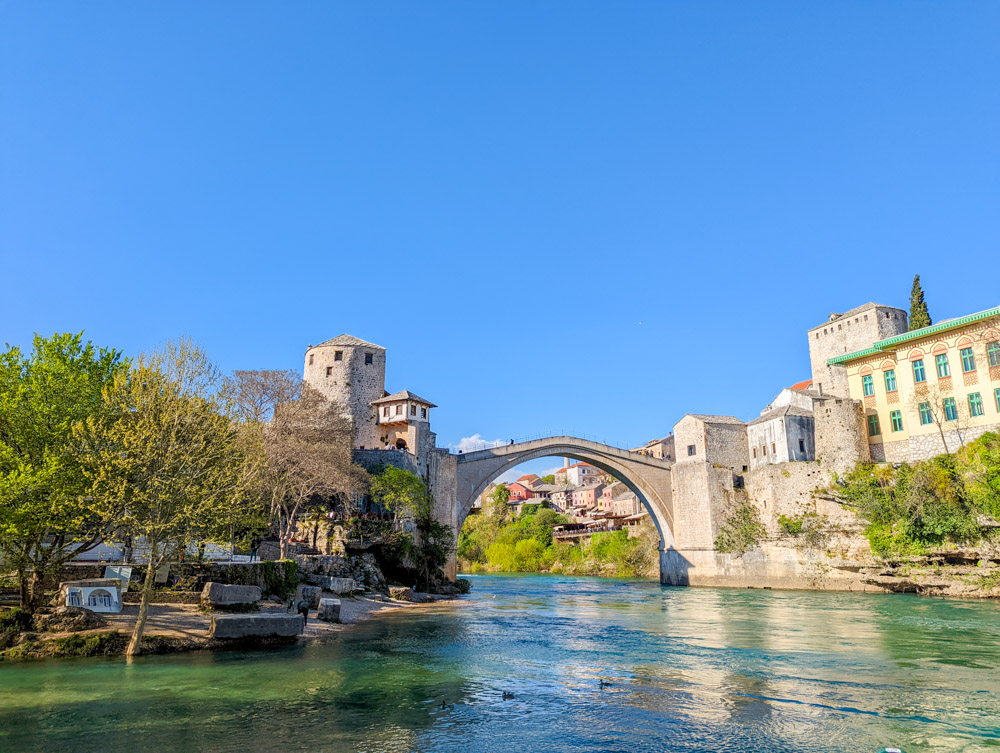
This year we hired a car and took a road trip around the Balkans region of Europe. We visited cities like Dubrovnik and Sarajevo but also drove around the mountains of Montenegro and visited Waterfalls in Bosnia and Herzegovina. For this trip, travelling by car was fantastic as rail links weren’t great and we wanted freedom to explore off the beaten track.
Pros of travelling by car
The main perk of exploring by car is having the freedom to go and pause wherever you please. If you want to take you time exploring without having to worry about pick up times, using your own transport makes this possible. You also have the power to pull over and stop when you see something exciting or just want to grab a snack or have a break. A simple bonus that public transport doesn’t offer.
Cars are also great if you want to explore more rural areas, national parks and off the beaten track. Public transport in Europe is fantastic for connecting cities but some out-of-town attractions are difficult to visit without multiple changes or pricey excursions. Having your own car can make it much easier and quicker to travel in the countryside.
Cons of travelling by car
One of the downsides to driving is that it can be tiring, especially across long distances. It helps if you are travelling with someone who you can share the driving with. Yet you will still need to stay more alert than you would on a train or bus, then again you can easily stop when you want for breaks.
Depending on what kind of destinations you’re heading to, having a car can impact the accommodation available to you. Particularly in cities, it may be hard to find hotels and AirBnBs with parking included. You may have to pay extortionate parking fees. You could always still a little further out and drive in each day or take public transport. This is likely less of an issue in smaller towns and rural areas. If you’re driving a campervan, this is even less of an issue. Provided you can find a camping spot, you’ll always have your bed with you!
Hiring a car can be expensive. If you are under 25, I probably wouldn’t even consider this option. Rental companies will either not rent to you, or charge a young driver’s fee which is sometimes double the price. Check price comparison websites for the best deals and book in advance. You also need to factor in the cost of petrol (you need to return the car fully fuelled) and insurance. If you’re planning on crossing boarders, double check when you book the car which countries you’re allowed to travel to. This isn’t likely to be a problem unless you’re leaving the EU. When we hired a car in Dubrovnik to explore the Balkans the rental company charged us extra on collection to pay for insurance in Bosnia and Montenegro. It wasn’t super clear if this was essential or not but so we paid it just in case.
When it’s best to travel by car
Road trips are great for when you want to go off the beaten track with more freedom stop and start when you feel. Car and campervan trips are better for exploring rural locations and national parks, rather than cities but that doesn’t mean cities are off limit completely.
How to plan a trip around Europe by car
If you are planning to hire a car, I’d highly recommend trying to plan a circular route. This will make your car hire much cheaper. Often rental companies will charge a one-way fee if you want to pick up and drop off in different locations.
Pin the main places you want to visit on Google maps and check the distances between. Think carefully about how long you want to drive for each day. Do your research and find interesting places to stop between the places you already have on your list.
Double check if you need an international driving permit for the countries that you’re going to. For Albania, Bosnia and Herzegovina and Montenegro we needed a 1968 permit. No one actually ever asked to see it when we were there. However, it only cost £5.50 and was easy to get at the Post Office so worth having just in case.
What is the best way to travel around Europe?
The best transport method for you really depends on where you want to go and how long for. Personal preferences on comfort and cost will also factor in. Here is the summary of points discussed above.
| Planes | Trains | Buses | Cars | |
| Pros | Cheap and quick to cover large distances | Fast, easy and comfortable | Cheap | More freedom |
| Cons | Additional costs and environmental impact | Can be expensive | Usually slower and uncomfortable | Can be expensive and tiring |
| Cost | Can be cheap | Mid-range (with interrail or eurail ticket) | Cheapest | Mid-range to expensive |
| Comfort | Medium | High | Low | Medium |
| Speed | Fastest (but extra wait time) | Fast | Slower | Slower but could be more direct |
| Environmental Impact | High | Low | Medium | Low-Medium |
| Best for | ~2 weeks, covering large distances | ~ 4+ weeks, visiting mainly cities | Budget travellers and for cities not too far apart | Exploring away from cities |
Ultimately, the choice is yours! You might even do a combination of different transport methods or try each on separate trips as we have done. If this is going to be your first big trip to Europe, I would start with train travel. Getting an Interrail or Eurail ticket is one of the best and easiest ways to travel in Europe. Particularly if you want to visit cities, which you are likely to do if it is your first time!

